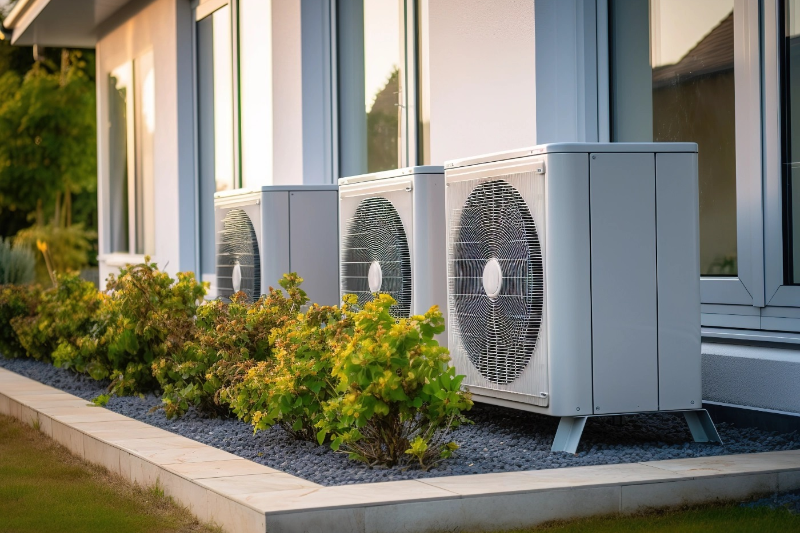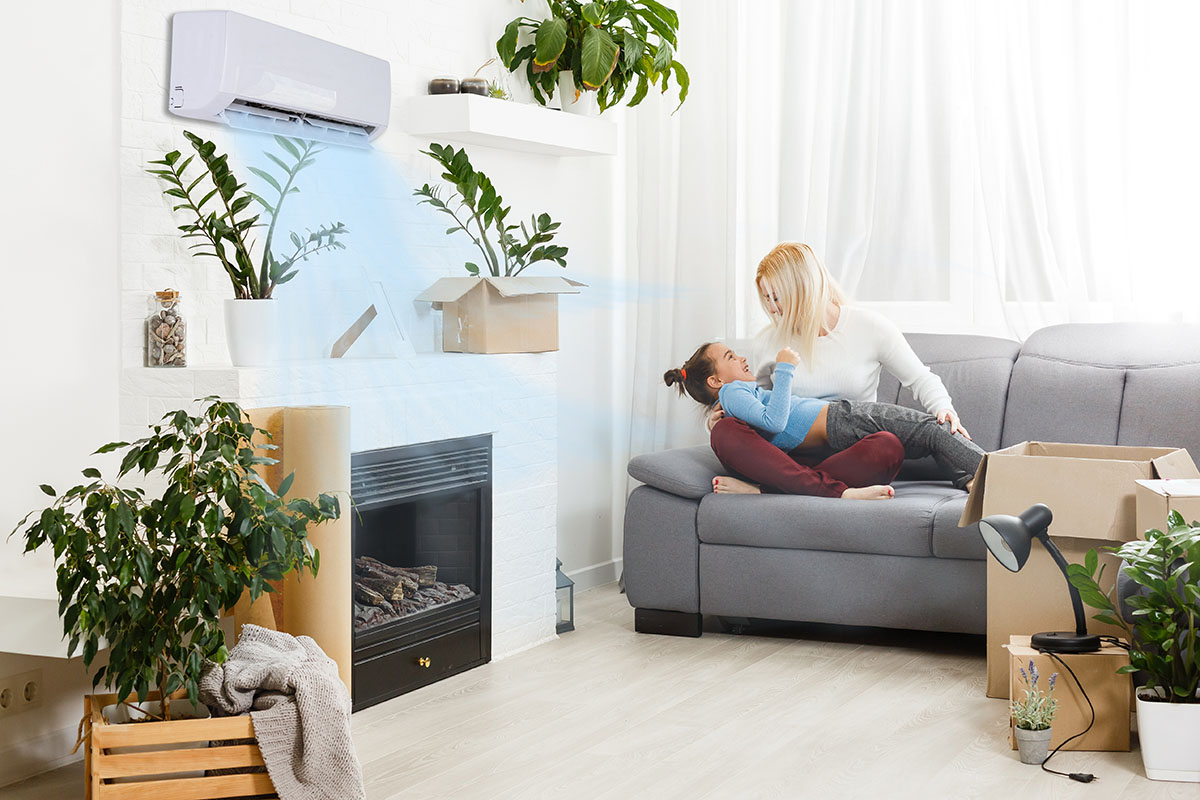Table Of Contents
As far as keeping your home comfortable during scorching summers is concerned, air conditioning cannot be compromised. However, it is not enough to just look around for an air conditioner to buy for your home or office. This is because choosing the right air conditioning system for your home can be a bit of a conundrum.
With what is available in the market today, the popular options that often come up in this decision-making process are central AC and split system air conditioning, sometimes called mini-split.
Since these systems have advantages and disadvantages, making the choice is crucial. In this article, we will break down the differences between central AC and split system air conditioning. This way, you will have the chance to make an informed decision.
Understanding Central Air Conditioning

Central air conditioning, often called ducted air conditioning, is a standard cooling system found in many homes. This may be related to its ability to cool an entire house effectively.
Here's how it works:
- Centralised air distribution: Central AC depends on a centralised unit, and it is usual to place it outside the house. This unit houses the compressor and the condenser, responsible for cooling the refrigerant.
- Ductwork: Once the air gets cooled, it is distributed throughout the home via a ducted network. The conditioned air gets carried to various rooms via these ducts, ensuring an even temperature throughout the house.
- Thermostat control: Central AC systems usually have a single thermostat controlling the house's temperature.
Pros of central air conditioning
- Efficient cooling: A central AC can help you cool an entire house effectively. For this reason, many homes have found it to be the ideal choice for them to make for their air conditioning needs.
- Even temperature: The ductwork helps ensure each room gets cool airflow. This allows for the maintenance of consistent comfort.
- Single control: A single thermostat can easily manage and monitor the house's temperature.
Cons of centralised air conditioning
- Installation complexity: Installation can be complex and often requires professional help. This is due to the complexity of ductwork and central unit setup.
- Cost: Comparatively, the initial cost of installing a central AC system can be higher than other alternatives.
- Energy consumption: Running a centralised air conditioner consistently can lead to higher energy consumption over time. This will ultimately lead to an increase in utility bills.
Understanding Split System Air Conditioning

Split system air conditioning, commonly called mini-split, is often considered a more versatile alternative to central AC. The use of this type of system offers zoned cooling. This means you can control the temperature in individual rooms or zones.
Here's how it works:
- Two main components: A split system comprises two main parts. These components include an indoor unit and an outdoor unit. The outdoor unit is used for housing the compressor and condenser. The indoor unit is mounted at a convenient spot in the room.
- Refrigerant lines: These systems connect the indoor and outdoor units using refrigerant lines. Combined, these lines transport the refrigerant to absorb heat from the indoor air. The absorbed heat is then released to the outside of the home.
- Zoned cooling: There is a thermostat for each indoor unit, making it possible to create a customised temperature control in different parts of the house.
Pros of split system air conditioning
- Zoned cooling: Since you can control individual zones, you can access the rooms that need it. This will go a long way in potentially saving energy.
- Easy installation: Mini-splits are typically more accessible and more cost-effective to install. This is understandable, considering that their installation process does not require ductwork.
- Energy efficiency: Due to the use of zoned cooling and inverter technology, you can expect that mini-splits can be highly energy-efficient.
Cons of split system air conditioning
- Initial cost: Although you can expect the installation to be cheaper, multiple indoor units can add up. This factor makes it comparable to central AC.
- Aesthetic impact: Indoor units can be visible and might not be appropriate for your room's décor.
- Limited cooling range: Where you have ample space or an expansive home to cool, this choice may not suit your cooling needs.
Cost Comparison
For you to have a deeper understanding of the differences between these two options, we can take a look at the cost comparison between them:
- Central AC: The initial cost of a central AC system includes the unit itself, the cost of ductwork installation if it is not done yet, and professional installation fees. The total cost will not likely be the same and can vary widely, but it is expected to be higher than mini-splits.
- Split system air conditioning: While mini-splits might have a lower upfront cost, remember that you'll need multiple indoor units for zoned cooling. The total cost can approach or even match that of central AC.
- Regarding ongoing costs, central AC systems can be more expensive to run due to cooling the entire house. Mini-splits have zoned control, leading to lower energy bills if used efficiently.
Energy efficiency
Energy efficiency is a crucial factor when picking an air conditioning system. Both central AC and split systems have their own advantages in this regard.
- Central AC: The efficiency and output of central AC depend on factors such as the Seasonal Energy Efficiency Ratio rating of the unit and the condition of the ductwork. Just as it is with most appliances, newer central AC units tend to be more energy-efficient.
- Split system air conditioning: Mini-splits are well-rated for their energy efficiency, especially compared to central AC. They use the inverter technology, which adjusts the compressor's speed to match the cooling needs. This helps to reduce energy consumption.
Maintenance and repairs

Once you have invested in any of these appliances, their maintenance and potential repair costs are essential aspects you should consider.
- Central AC: These systems need regular maintenance, including cleaning and inspecting the ductwork. This can add to the maintenance costs. Where repairs are required, they can be expensive, especially if the ducts need fixing.
- Split system air conditioning: Maintenance for mini-splits is usually more straightforward. The main tasks include cleaning the indoor units and checking refrigerant lines. Where there is a malfunction, repairing individual units is often more cost-effective than when there is the need to fix an entire central system.
Suitability for different home types
Consider the type of home you have:
- Apartments: Mini-splits are ideal for apartments because of their compact size and zoned cooling capabilities.
- Single-family houses: You can use either central AC or mini-splits in single-family homes. Your selection will depend on the size and layout.
- Multi-story homes: Central AC may be the right choice where you have multi-story dwellings. This is so because, in most cases, such are built with a centralised duct system from scratch.
Environmental impact
Both systems have pros and cons in matters relating to the environment. They are worthy of consideration, and you can take a critical look at each of them:
- Central AC: The ductwork can cause energy loss, which is not environmentally friendly. However, newer central AC units have been designed to be more eco-friendly refrigerants.
- Split system air conditioning: Mini-splits are typically considered to be more environmentally friendly because of their ability to cool only the necessary areas and their energy efficiency.
Let a Professional Help You Decide
Scouring for more information on the comparative advantage of ducted air conditioners or split-system air conditioners may not help you more than what you have already learned in this post. At times like this, the best approach is to let a professional help you with more information and guide you to make the right choice.
This can be achieved after consideration to check your needs and the space you want to cool. Contacting an HVAC professional for help can also go a long way in helping you reduce the unnecessary costs you may face in the future.



